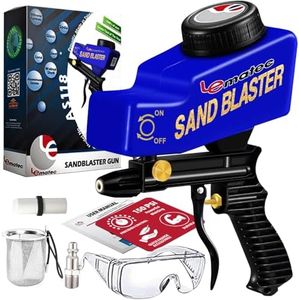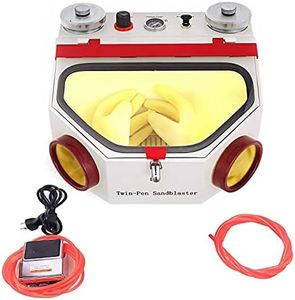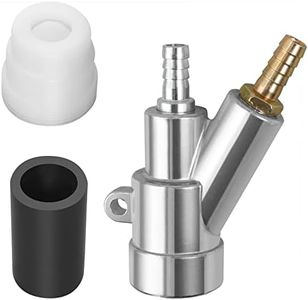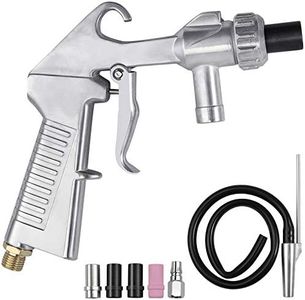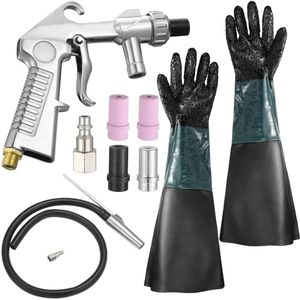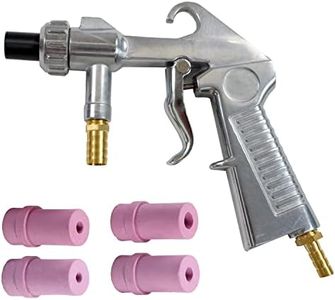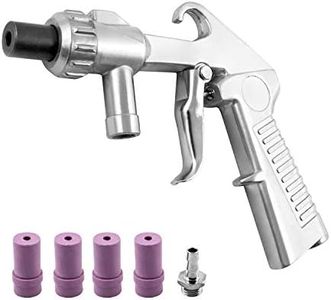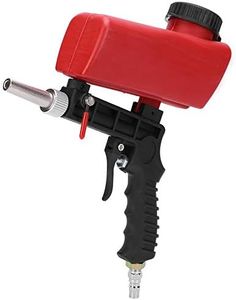We Use CookiesWe use cookies to enhance the security, performance,
functionality and for analytical and promotional activities. By continuing to browse this site you
are agreeing to our privacy policy
10 Best Sandblasters
From leading brands and best sellers available on the web.Buying Guide for the Best Sandblasters
Choosing the right sandblaster depends on your intended use, the scale of your projects, and the types of surfaces you'll be working with. Sandblasters are used to clean, etch, or strip surfaces by blasting abrasive materials at high pressure, so understanding the features and picking the correct specifications will help you work efficiently and safely. Before making a choice, consider where you'll use the sandblaster (shop, garage, outdoors), what materials you'll be blasting, and how powerful your air compressor is, if you'll be using a pneumatic model.Type of SandblasterSandblasters come in a few main types: siphon-feed (suction), pressure, and gravity-feed (hopper). Siphon-feed units are generally suitable for smaller jobs and hobbyists; they draw abrasive into the airflow as you work, offering moderate power. Pressure sandblasters are more powerful and better for bigger, tough jobs like stripping car bodies or cleaning large machinery. Gravity-feed models are portable and easy to use, often favored for spot repairs or touch-ups. Think about the size and intensity of your tasks to decide which type makes sense for you.
Tank CapacityTank capacity refers to how much abrasive material the sandblaster can hold at once. Small tanks (less than 10 pounds) are good for short or touch-up work, as they’re lighter and easier to manage, but need frequent refilling. Medium tanks (10-50 pounds) offer a good balance for hobby work and small to medium projects. Large tanks (over 50 pounds) are best for extended use or big surfaces, minimizing refills but adding weight and bulk. The right capacity depends on how long you want to work at one stretch and how mobile you need the unit to be.
Nozzle Size and MaterialThe nozzle controls the flow of the blasting media and influences the coverage, speed, and precision of your work. Smaller nozzles are good for detailed or delicate projects, as they use less abrasive, while larger ones are better for fast removal on bigger surfaces. Nozzles made of ceramic wear out faster but are inexpensive; steel or tungsten carbide nozzles last much longer and are suited for frequent or heavy-duty use. Choose a nozzle size and material based on your project details and how often you plan to use the sandblaster.
Air Pressure and Flow RequirementsThe air pressure (measured in PSI) and flow (measured in CFM) needed by a sandblaster determines the type of air compressor you’ll need. Lighter-duty sandblasters work at lower PSI and CFM, so they pair with smaller compressors, ideal if you already have one in your garage. High-capacity sandblasters need larger compressors to keep up with their demands—if the compressor is too small, the sandblaster won’t work effectively. Always match your choice to your compressor’s abilities, or plan to acquire both together for best results.
Abrasive Media CompatibilityDifferent sandblasters support different abrasive materials, such as sand, glass beads, walnut shells, or aluminum oxide. The compatibility affects which kinds of projects you can tackle, as some media are more aggressive than others or better for certain surfaces. Consider what you’ll be cleaning—soft surfaces or delicate materials will do better with gentle abrasives, while tough rust or paint may need more powerful media. Make sure the machine you choose supports the media you plan to use most often.
Dust Collection and PortabilitySome sandblasters are equipped with dust collection or containment features, which help keep the workspace clean and safe from airborne particles. This is especially important if you’ll be blasting indoors or in areas where debris could cause problems. Portability is also key—smaller units are easy to move and store, while bigger models might be stationary or require wheels. Think about where you’ll use the sandblaster most often and whether easy cleanup or mobility is a priority for you.
